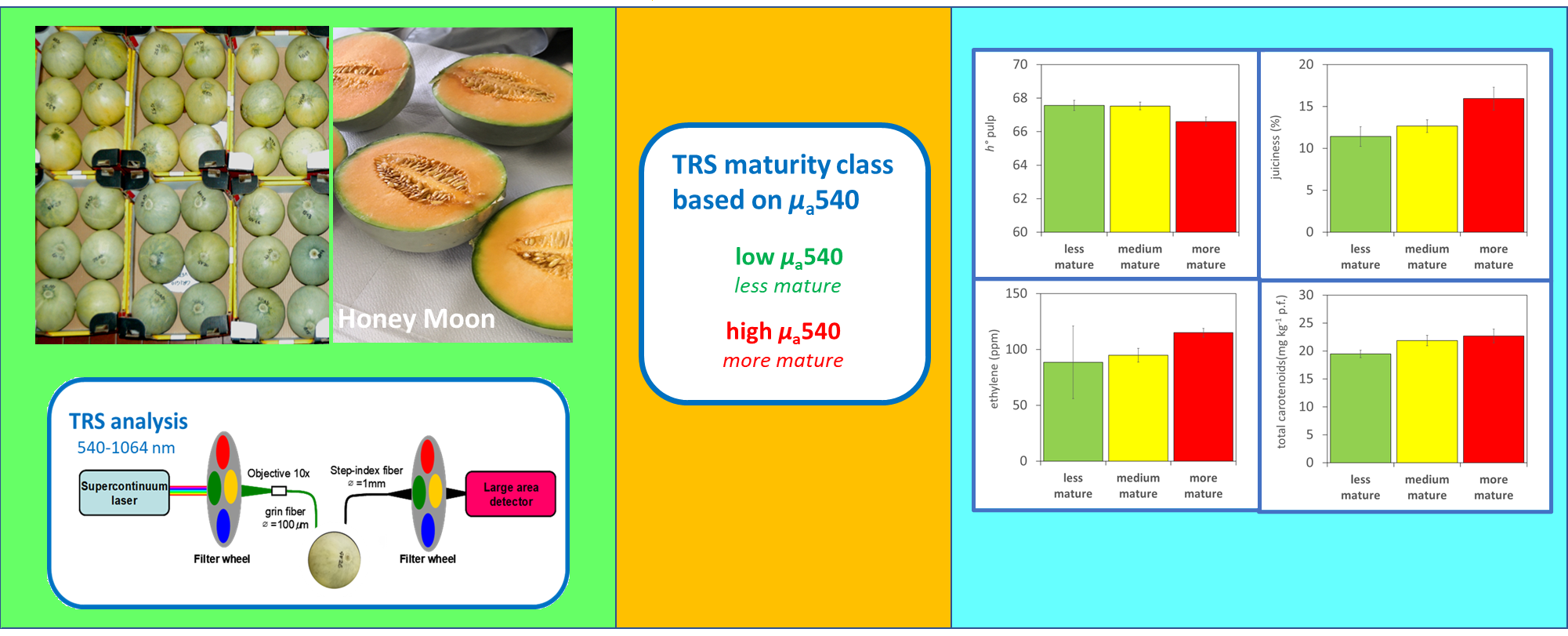
Published 2023-02-21
Keywords
- Carotenoids,
- Cucumis melo L.,
- ethylene,
- juiciness,
- quality
- TRS ...More
How to Cite
Copyright (c) 2023 Maristella Vanoli, Giovanna Cortellino, Valentina Picchi, Marina Buccheri, Maurizio Grassi, Fabio Lovati, Laura Marinoni, Pietro Levoni, Alessandro Torricelli, Lorenzo Spinelli

This work is licensed under a Creative Commons Attribution 4.0 International License.
Abstract
The aim of this work was to explore the feasibility of time-resolved reflectance spectroscopy (TRS) in determining the ripening degree and the quality of orange-fleshed melons. Sixty ‘Honey Moon’ melons were measured by TRS in the 540-1064 nm range and classified as less (LeM), medium (MeM), and more (MoM) mature according to increasing values of μa540. MoM fruit showed yellower peel color, slightly more orange pulp, higher juiciness and higher carotenoid contents than LeM ones. MoM fruit also showed higher internal ethylene concentration and lower firmness than LeM ones, even if the differences were not significant. The μa540 was positively related to internal ethylene, carotenoid accumulation, and juiciness, indicating that μa540 was linked to different ripening processes in melons. However, the relationship between μa540 and total carotenoid content was not as high as expected due to the low variability of pulp color and of carotenoid content. Changes in flesh color toward a more orange shade were accompanied by increased juiciness and ethylene production and by carotenoid accumulation, while changes in peel color were associated with changes in flesh firmness and juiciness. In conclusion, the absorption coefficient measured at 540 nm (μa540) by TRS could be used to sort melons in different ripening degrees; however, its applicability will need to be evaluated on a larger number of fruits and on other varieties.




